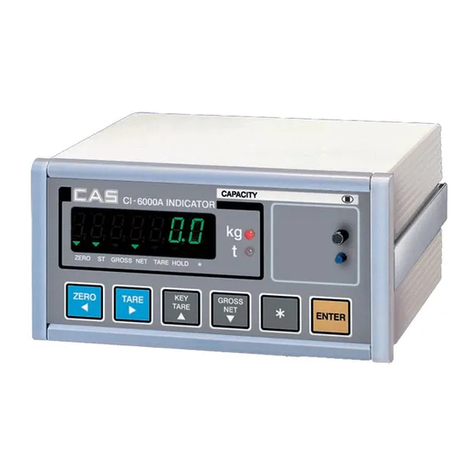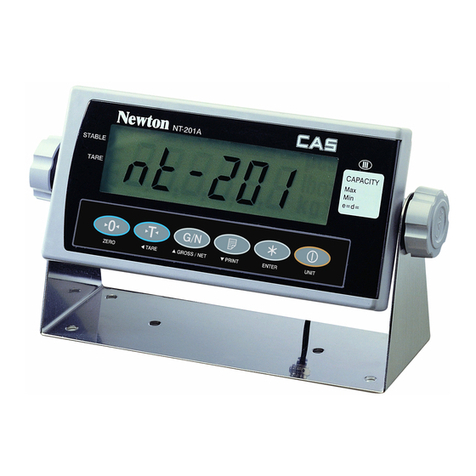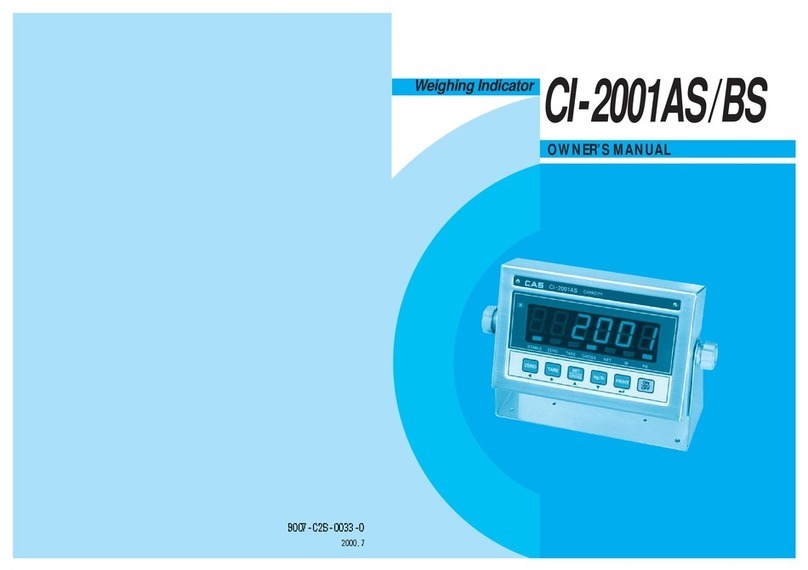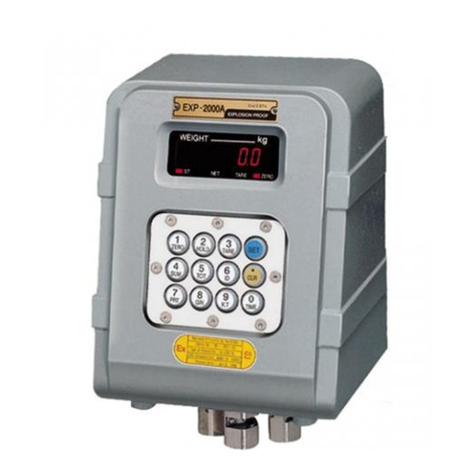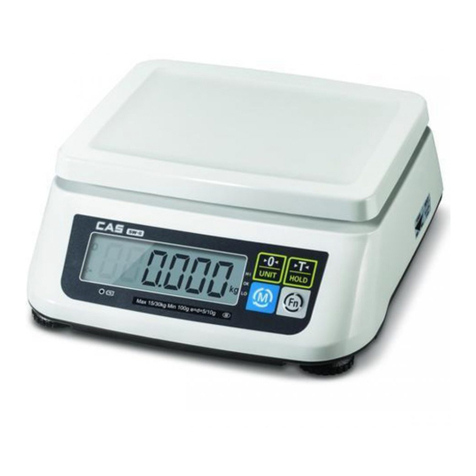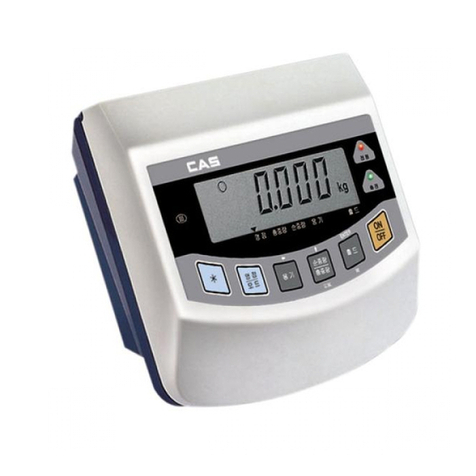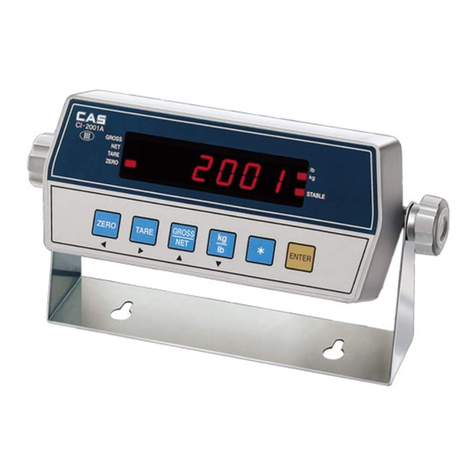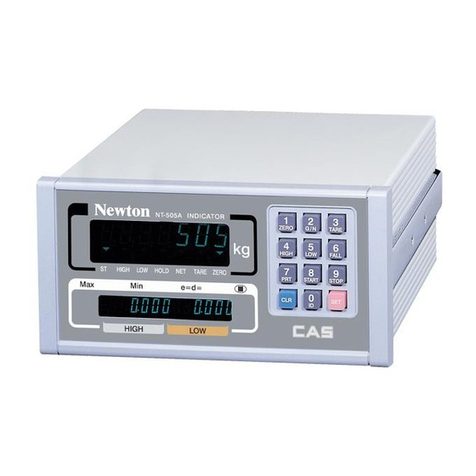
A. SPECIFICATION
Model CT100
CAPACITY 6kg 15kg 30kg
Division, e= 1/2g 2/5g 5/10g
Minimum weight ※ 20g 40g 100g
DISPLAY Alpha-numeric LCD
5/5/6/7 (Tare / Weight / Unit Price / Total price)
PRINTER INFO.
Printing Speed : Max 75 mm/sec
Recommended size for thermal paper;
58mm (Width) / 65μm(Thickness) /
60mm (Maximum Diameter)
PRINTER
RELIABILITY
RESISTANCE 100,000,000 pulses or more
RESISTANCE 50 km or more
PLU MEMORY CAPACITY 30 Direct PLUs, 1,000 Indirect PLUs, 2 Sepcial PLUs
POWER AC 230V, 50 ~ 60Hz
OPERATING TEMPERATURE -10`C ~+40`C
EXTERNAL UTILITIES Default: RS232C, Cash Drawer , USB Device
RS-485 Option : USB Host , RS485 , ZigBee
Ethernet Option : USB Host, LAN, WLAN
POWER CONSUMPTION Maximum 35W
BATTERY LIFE
Battery life (continuous usage)
Weighing Mode only: 240mA, 28 hrs
With backlight: 260mA, 26 hrs
With printer: 1800mA, 4 hrs
PRODUCT SIZE (mm) B Type : 342(W) X455(D) X 152(H)
P Type : 342(W) X455(D) X 413(H)
R Type : 342(W) X455(D) X 488(H)
PRODUCT WEIGHT B Type : 6.8 kg, P Type : 8 kg, R type : 8.5kg
▶ Notice: specifications are subject to change for improvement without notice.


